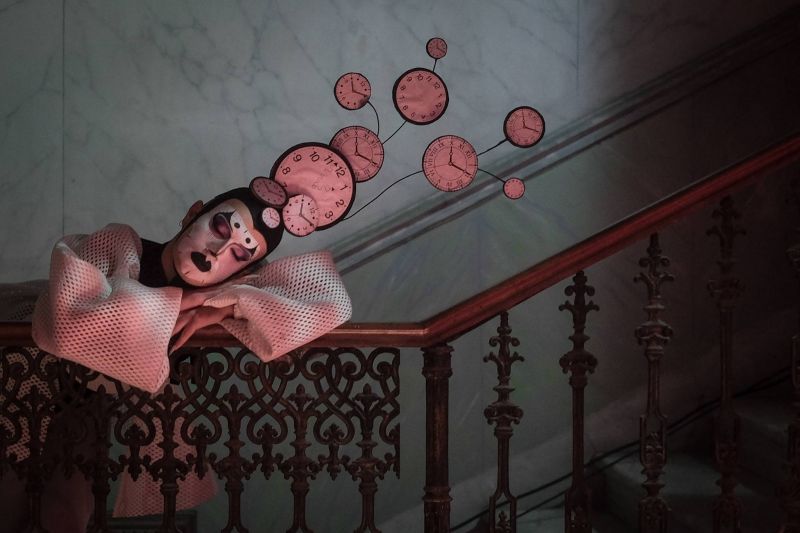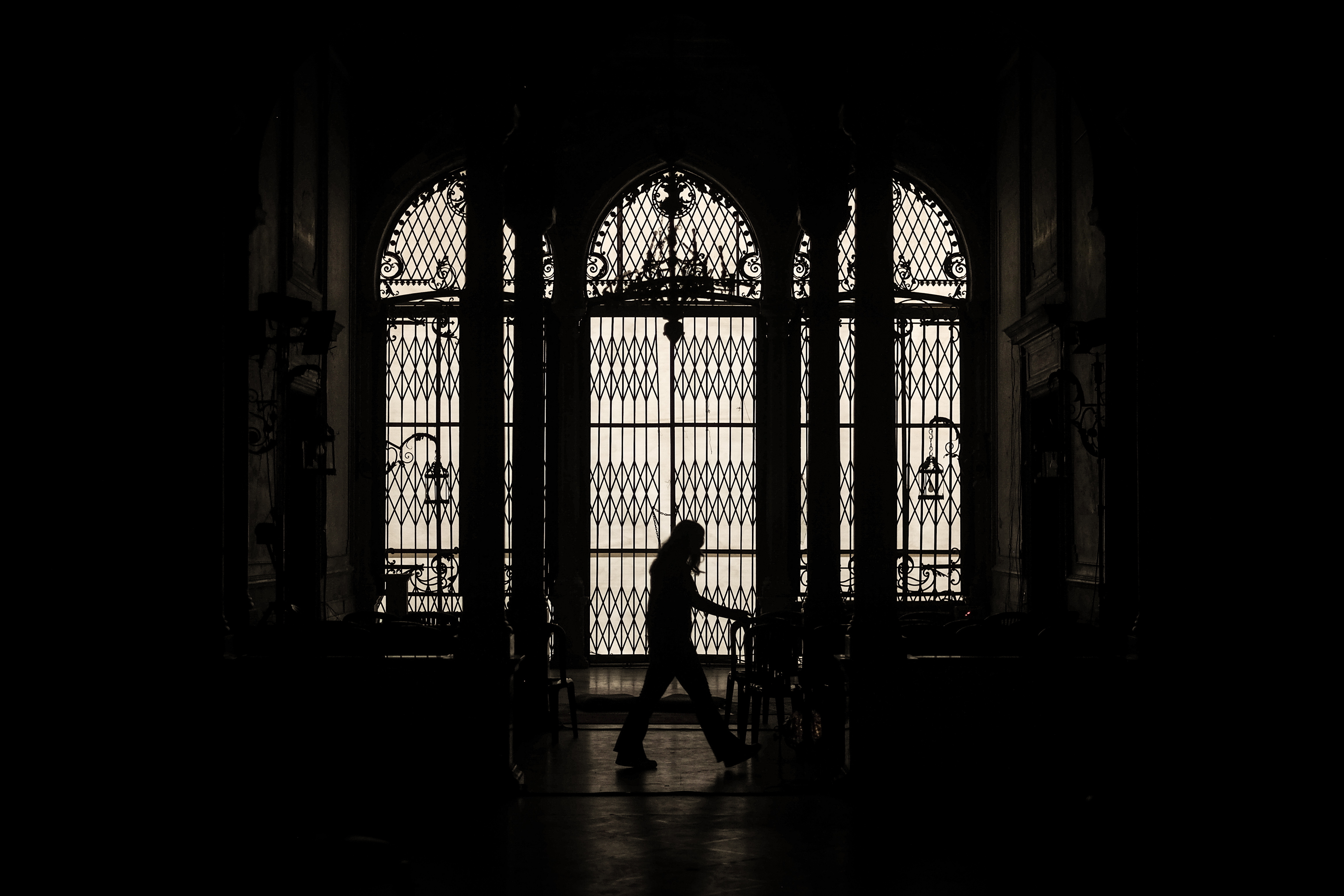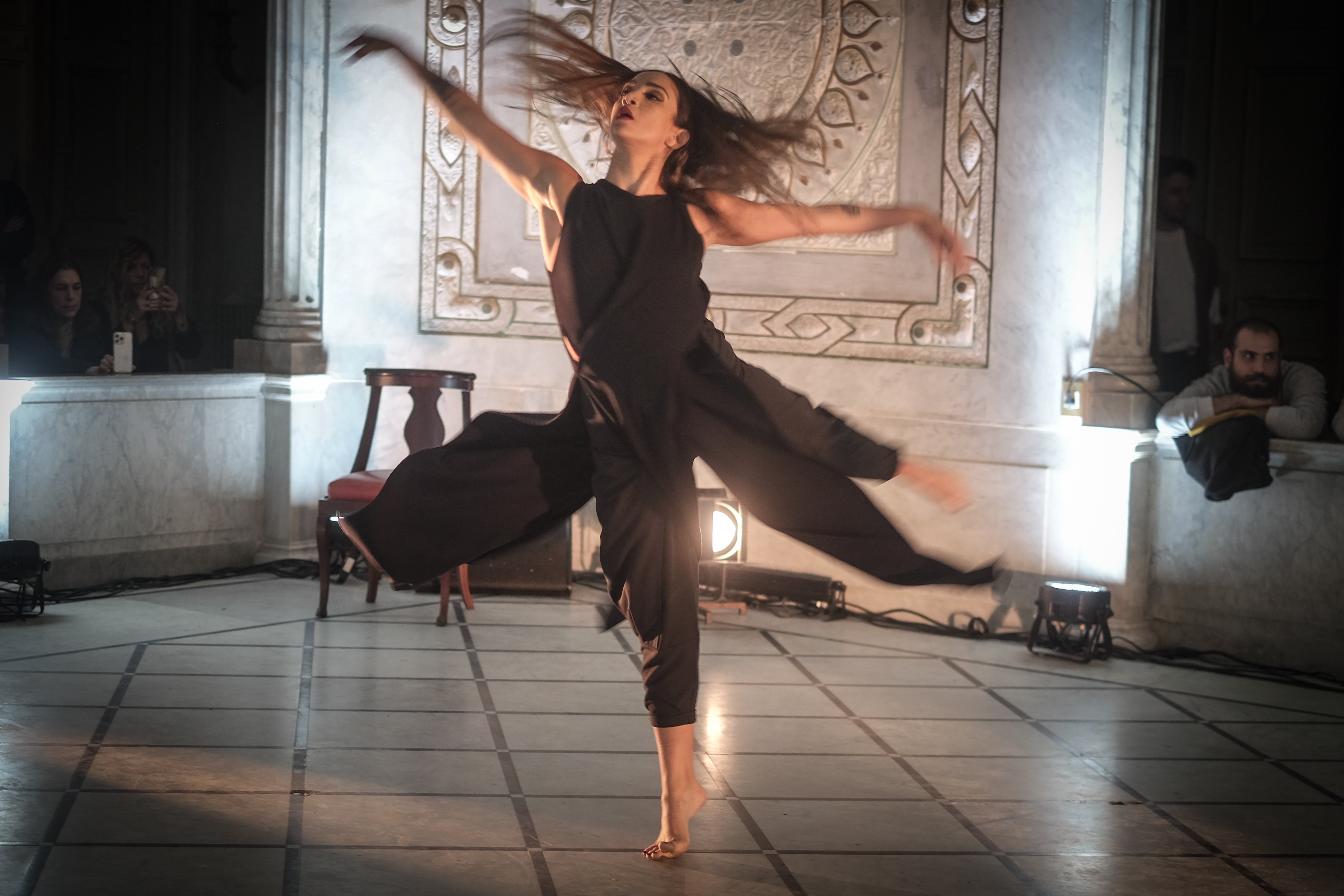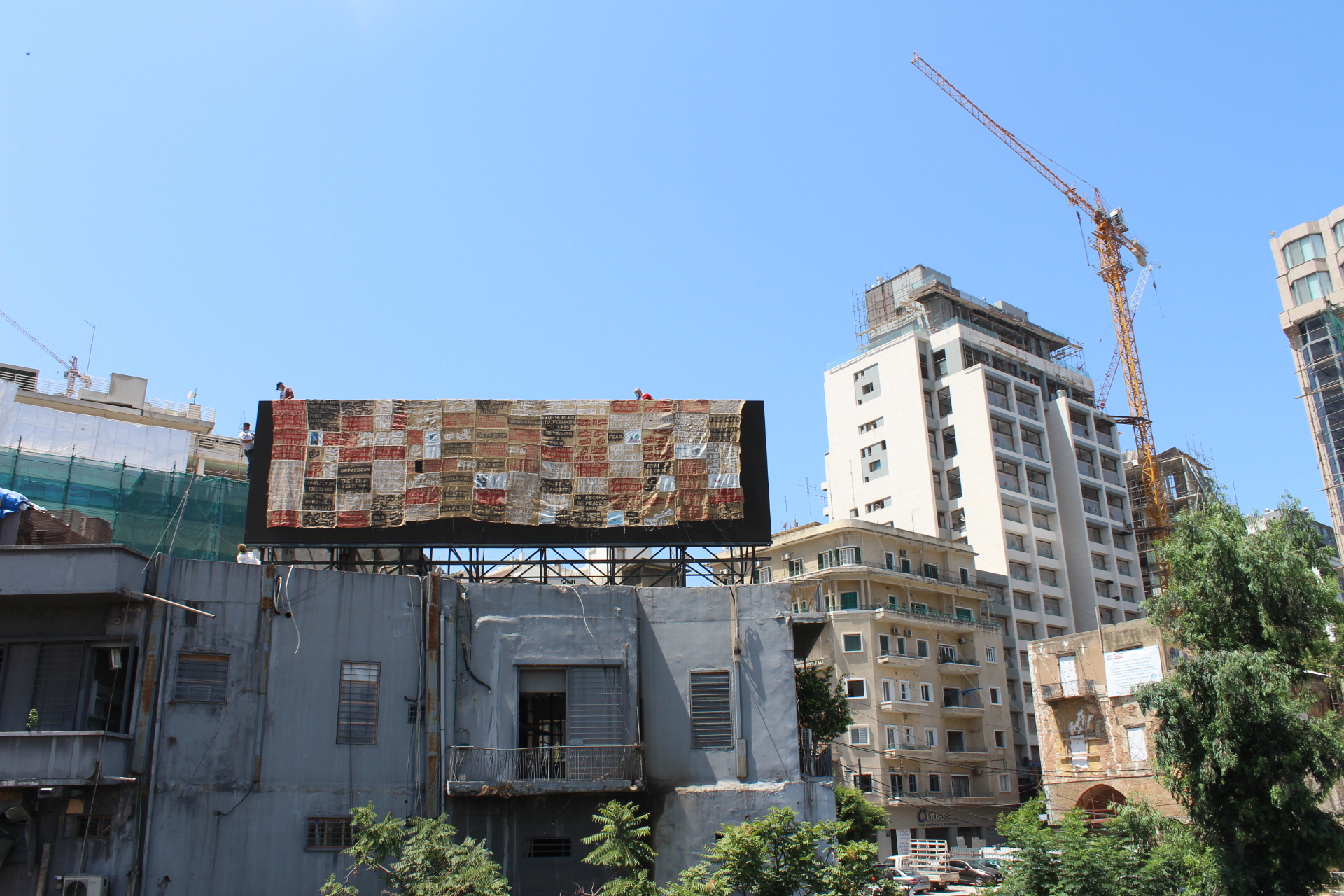
A scene from the "Before you go" performance at the Sursock Palace. (Credit: João Sousa/L'Orient Today)
“We felt the need for people to really own the space, to have a sense of belonging” says Romy Assouad of Yaraqa, who organized a performance at Sursock Palace for the IN BETWEEN Festival.
The Nov. 16-20 festival hosted performances, readings, plays and concerts that tried to bring answers to two questions: Where do you find or create a space in a city that, in the span of three years, has been destroyed by COVID-19, the economic crisis and the Beirut port explosion? And how did the past three years change the relationship between artists and their city?
A palace familiar, yet strange
The Sursock Palace is without question one of Beirut's most famous old buildings. It stands for a grandeur that no longer seems to exist in the city, for a cultural elite — for better or worse. The palace was heavily damaged by the 2020 port explosion and is still undergoing extensive restoration works.
Outside it was still daylight when the 80 or so guests of the performance entitled "Before you go" entered the palace, and in doing so, another world. When the doors opened again an hour and a half later, it was pitch dark outside. Time had been spent in a strange place, a place known to everyone in the city and yet never experienced like this before. The palace’s windows were still boarded up, so no light penetrated. The empty picture frames looked ghostly; cracks and holes in the walls, and the broken glass of the sparsely lit chandeliers testified to the palace’s recent destruction. It felt simultaneously like a place to fear and a place to dream.
 The darken interior of the Sursock Palace. (Credit: João Sousa/L'Orient Today)
The darken interior of the Sursock Palace. (Credit: João Sousa/L'Orient Today)
Four performances were on display. Led by a charismatic master of ceremony, the audience could watch very disparate works of contemporary dance, ballet and even a drag show.
However, while the content of the four performances themselves was intriguing and entertaining, it was their interaction with the space in which they were performed that was truly impactful. “We wanted people who usually call this city their home to feel like strangers,” Assouad of Yaraqa told L’Orient Today.
To give people a sense of belonging again, to give them a space of their own again, through first making them estranged — that seems to be the task these artists are taking on.
 A dance performs during "Before you go" at the Sursock Palace. (Credit: João Sousa/L'Orient Today)
A dance performs during "Before you go" at the Sursock Palace. (Credit: João Sousa/L'Orient Today)
The rebirth of an old cinema
The Cinema Royal in Burj Hammoud stood shuttered for years. In between its inauguration in 1952 and its closing during Lebanon’s 1975-90 Civil War, it screened movies from an array of genres.
Sitting on the edge of the stage in its sparsely lit hall, Karl Hadifé says, “We truly believe that to come up with some sort of resistance, we have to ensure culture and education. And for that, you need a space before anything else.”
Hadifé, 25, knows how presumptuous that sounds. But he means it. With his partner, he founded the organization Neighborhood, which will take charge of running the cinema. For IN BETWEEN, they opened the space provisionally; the grand opening is scheduled to take place on Dec. 21.
“We want a place for all the people of this neighbourhood. We want to provide culture at affordable prices. And we want to have something for young kids, workshops after school," Hadifé explains, just before the lights in the hall cut — a regular occurance in a country where the state-owned power provider fails to supply more than a couple of hours of electricity per day. Hadifé switches on his phone flashlight, and adds sarcastically, “We have to be thankful for the government, since they are teaching us so many things. How to calculate. How to be patient.”
Hadifé, after living in New York for a year, came back to Beirut in 2020, at a time when, he says, everyone else was leaving the city. “Most of the friends I had are no longer here,” he tells L’Orient Today. “And the friends I have now, I met them in the last year.”
At Cinema Royal, they plan to host various artistic performances: theater plays, concerts, dance. Most of all, they want to create a space where artists can think freely.
Collecting the aftermath of the port explosion
Standing in front of their artwork titled “Beirut Narratives 2.0,” displayed in the Abroyan Factory in Burj Hammoud, architects — and sisters — Celine and Tatiana Stephan explain how their project came to be.
A few days after the Beirut port explosion on Aug. 4, 2020, the sisters started collecting quotes from their friends and acquaintances via mail and social media. Then they went to the streets, talked to the people who were cleaning up, trying to rebuild their city. They went to hospitals and fire stations. They collected everything people told them, and eventually broke it down into three categories: Description, in red, “because it was bloody,” Celine Stephan says; emotion, in black, “because it was gritty”; and reflections, in white, “because sometimes it was hopeful.” They then sewed the sentences onto scraps of fabric, the same fabric used to make grain sacks. As thread, they used the same type hospitals used to sew the wounds of the injured following the blast.
The result is 160 square meters of quotes that say things like: “I was half blind by the blood” (red); “State of Panic” (black); and “Doctors worked their miracles” (white).
But in this setting — an art-venue at a festival-opening — the stitched quotes seem somehow misplaced. In fact, they do not usually hang in closed rooms for the appraisal of an artsy audience. For the past two years, they have been displayed on the facades of houses and hospitals in Beirut.
 The Stephan sisters did not design "Beirut Narratives" to be hung in a traditional art gallery space. (Credit: Celine Stephan)
The Stephan sisters did not design "Beirut Narratives" to be hung in a traditional art gallery space. (Credit: Celine Stephan)
“The politicians make us all busy worrying about other things,” Tatiana Stephan says. “The electricity. The water. The money. So we don’t have time to process what happened. That is why we need to keep remembering it actively.”
With “Beirut Narratives,” the two artists — who do not want their work to be understood as art, but explicitly as a form of silent protest — seem to have succeeded in something rare: a real communication between the city and its inhabitants.
“The buildings are talking when the people can’t. Because they are still traumatized, or they just learned in the past to shut down their feelings and their memories. So we are giving them the opportunity to share. The city listens to them. And the city serves as a mouthpiece for them.”